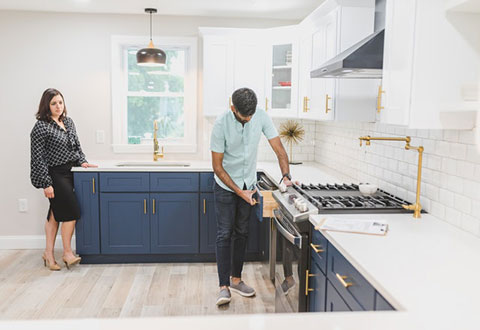 There are many reasons to get your home inspected. It depends on how you might be selling the house or searching for new insurance. If you’re looking to have an inspector examine your home, it better be in tip-top form. The outcome of an inspection can be affected by the tiniest of factors. It is the responsibility of inspectors to identify any problems at the earliest possible time. The following issues can be addressed before an inspector arrives at your home may be easier if you split your home into the following areas.
There are many reasons to get your home inspected. It depends on how you might be selling the house or searching for new insurance. If you’re looking to have an inspector examine your home, it better be in tip-top form. The outcome of an inspection can be affected by the tiniest of factors. It is the responsibility of inspectors to identify any problems at the earliest possible time. The following issues can be addressed before an inspector arrives at your home may be easier if you split your home into the following areas.
Preparing Your Home for Inspection
It’s easy to decide whether to offer your house for sale. But getting your home ready for an inspection is perhaps the most challenging part of the process. So take a look at the following things.
Exterior
Among the exterior features of your home include the roof, siding windows, and foundation. There should be a thorough inspection of outside doors and windows to be sealed properly. It’s important to fix any missing or broken siding and any portions of the walkway or roof damaged. Be sure that your chimney is properly vented if you have one. The lawn should be maintained and mowed, too. In the end, any mulch or gravel should be removed from the foundation’s bottom.
Interior
Appliances that require electricity, such as lighting and plugs, should work properly in your house. Connecting to a main electrical panel needs to be simple. Everything in the plumbing system should function as well as it did before. Cleaning and decluttering the house is usually an excellent idea. However, while a clean house isn’t the aim of home inspections, it will help if the inspector isn’t required to move things around while inspecting different fixtures.
Cracks in the walls and ceilings should be patched up before the home inspection. In certain circumstances, painting walls in high-traffic areas may be beneficial to get rid of marks or other stains off the wall. The condition of the floor should always be visible by sweeping and mopping the flooring.
Crawlspace/Basement/Attic
An in-depth inspection of the attic space, basement, and the crawlspace of each house inspection is completed. Check that the vents on the outside are clear of obstructions and ensure adequate ventilation. Insulation that is properly fitted should be kept from air vents. Before the inspection, the basements and crawl spaces must be dry, and any leaks should be addressed. Electrical wiring should be in good working order and securely fastened.
HVAC System
Ensure that your home’s heating and cooling systems work properly before your getaway. Clean or replace your filters and vents according to the manufacturer’s recommendations. Ducts should also be cleaned as often as possible. During the inspection, the thermostats should be functional and accessible. Turning on the heating system and the air conditioning is normally necessary for an inspector. You must provide the inspector with an invoice if your HVAC was recently upgraded or maintained.
The majority of home inspections are conducted. You might be able to learn from them, though it is about what needs to be fixed and the areas that need fixing in your house, and when it is best to get them completed. It also offers you an indication of the value of your home and your home’s construction quality. Before you contact an inspector, take a look around your house and take care to fix any issues that could detract from its overall worth. This will increase the value of your home and make it more appealing to potential buyers, which is in your best interest.

